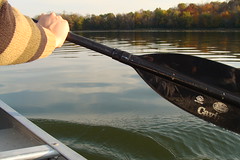The NETS listed on the ISTE site are something that I have referred to often in my coursework and also in my teaching and my support of teachers integrating technology into the curriculum. There are so many Web2.0 tools to choose from but the value of the tool is best judged by its ability to help teachers and students better meet these national standards.
One of my favorite Web2.0 tools is student blogging, and in my case the platform is classblogmeister.com, developed by David Warlick as part of his Landmarks Project. Giving students the opportunity to blog certainly provides the opportunity for students to “communicate and collaborate” (standard 2). Blogging allows students to see that they are part of the global community and publish their writing for a global audience. Participating in the Student Blogging Challenge is a way to open to the door to  interaction with students around the world and develop cultural understanding and global awareness. The student’s individual blog page can also be a place to showcase his or her creative projects. Through this challenge my students have had the opportunity to participate in Blog Action Day held on October 15. The 2010 theme is “water” and the 2009 theme was climate change. Becoming aware of global issues affords students the opportunity to read about current problems and think about possible solutions and share those solutions with others. (standard 4).
interaction with students around the world and develop cultural understanding and global awareness. The student’s individual blog page can also be a place to showcase his or her creative projects. Through this challenge my students have had the opportunity to participate in Blog Action Day held on October 15. The 2010 theme is “water” and the 2009 theme was climate change. Becoming aware of global issues affords students the opportunity to read about current problems and think about possible solutions and share those solutions with others. (standard 4).
 For creativity and innovation (standard 1) my thoughts jump to a number of Web2.0 tools that allow students to showcase their knowledge in creative ways, such as Glogster EDU. It has been my experience that students love the platform and will spend a great deal of time designing their glogs. They can follow a logical thought process and explain their concept or newly acquired knowledge with others by sharing it via this creative digital tool. Students can also use digital tools for collaboration and “use models and simulations to explore complex systems and issues” (standard 1c) in many of the projects showcased by Discovery Education such as Siemens We Can Change the World Challenge. This again fits well with standard 4 as a platform for critical thinking and problem solving.
For creativity and innovation (standard 1) my thoughts jump to a number of Web2.0 tools that allow students to showcase their knowledge in creative ways, such as Glogster EDU. It has been my experience that students love the platform and will spend a great deal of time designing their glogs. They can follow a logical thought process and explain their concept or newly acquired knowledge with others by sharing it via this creative digital tool. Students can also use digital tools for collaboration and “use models and simulations to explore complex systems and issues” (standard 1c) in many of the projects showcased by Discovery Education such as Siemens We Can Change the World Challenge. This again fits well with standard 4 as a platform for critical thinking and problem solving.
The theme of Digital Citizenship (standard 5) needs to be present in all our work with digital tools. I have often relied on video sharing sites such as YouTube to open up discussion on Internet Safety, and I am also hoping to be involved in the Digiteen Project which will focus on Digital Citizenship. Students involved in this global collaborative project will rely on such tools as wikis and Skype and Google Docs to accomplish the project goals. I do have one eighth grade student who will not be thirteen years old until January 22, but I am hoping that will not be an issue in the first weeks of the project.
 Although there are many other wonderful tools that could fill a book (and many writers have done just that) the tools that I have mentioned above have become rather standard fare in today’s classrooms. These basics can be enhanced with tools that showcase student work and allow diverse groups to come together to collaborate and appreciate each other’s similarities and differences. These tools have helped and continue to help both teachers and students navigate the 21st century global seas. We just need to keep paddling.
Although there are many other wonderful tools that could fill a book (and many writers have done just that) the tools that I have mentioned above have become rather standard fare in today’s classrooms. These basics can be enhanced with tools that showcase student work and allow diverse groups to come together to collaborate and appreciate each other’s similarities and differences. These tools have helped and continue to help both teachers and students navigate the 21st century global seas. We just need to keep paddling.
Images
canoe paddle http://www.flickr.com/photos/dwallick/2964718526/
Thomas a Becket glog http://s53hakr.edu.glogster.com/thomas-a-becket/
Blog Action Day badge http://blogactionday.change.org/